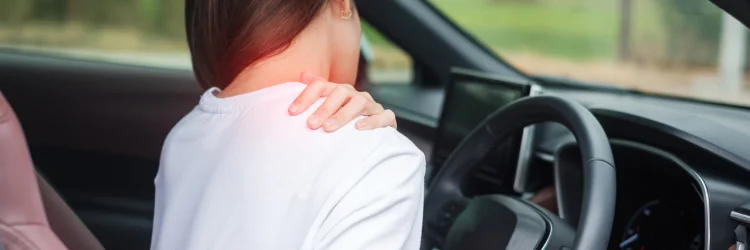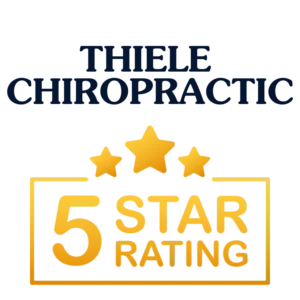Spine
July 1993 Jul; Vol. 18; No. 9; pp. 1115-1122
James R Taylor JR, MD, PhD; LT Twomey, PhD; from the Department of Anatomy and Human Biology, University of Western Australia. This study cites 31 references.
This is a comparative study of cervical spines from 16 subjects who died of major trauma and 16 control subjects who died of natural causes.
KEY POINTS FROM THIS ARTICLE:
1) “An acute neck sprain is caused by rapid movements of the head resulting from acceleration forces, often produced by the impact of a motor vehicle accident.”
- “Rear-end collisions cause extension-acceleration injuries, which are considered to cause the greatest damage.”
- Extension-acceleration injuries, produced experimentally, show “damage to the anterior muscles, ligaments, discs, spinal and sympathetic nerves of the neck, and the esophagus.”
- “Disc injuries have been implicated, at autopsy, on examination of patients with acceleration injuries, or reported at surgery sometime after the initial injury; long-term follow-up of patients after motor vehicle accidents may reveal delayed radiographic changes in the discs.”
2) “Since the widespread use of seat belts, many patients survive severe motor vehicle accidents; many of them have persistent neck pain despite no visible neck fracture.” [Important]
3) “Neck sprain without fracture poses a difficult diagnostic problem because soft-tissue injuries are not usually demonstrable by using standard radiography.”
- Consequently, “there is no objective display of an injury to account for the pain, [and] patients are often regarded as having a psychosomatic illness with little organic basis.”
- “Soft-tissue injuries, not visible on standard radiography, would demonstrate an organic basis for the pain associated with soft-tissue injuries.”
4) “A substantial proportion of neck sprains remain symptomatic for more than 2 years with little or no evidence of organic disease.” [Important]
5) Findings:
- This study showed “clefts in the cartilage plates of the intervertebral discs in 15 of 16 spines from the trauma victims.”
- “The ‘injury-free’ spine was from a 29-year-old man run over by a motorcyclist when lying in the roadway.”
- “These were quite distinct from the uncovertebral clefts and central disc fissures that are a normal feature of aging in cervical discs.”
- “Posterior disc herniations through a damaged anulus fibrosus and hemarthrosis in facet joints were also observed.”
- “No directly comparable lesions were found in the control subjects, but two discs in this group showed ‘rim lesions,’ which may be old injuries.”
- “In some discs the whole central part of the cartilage plate was cleft with almost complete separation of a disc from the adjacent vertebral body with only the longitudinal ligaments remaining intact.”
- “Other injuries noted include six traumatic disc ruptures with posterior herniation, ten examples of annular bruising (blood within the outer anulus) and twenty-one examples of soft-tissue damage to the synovial joints.”
- “Most of the synovial joint injuries are hemarthroses, from small capsular or synovial tears.”
- “These facet injuries do not have an obvious predilection for particular segment levels.”
- “Traumatic herniation with disc material into the posterior annulus, or into the spinal canal, was found in six discs from four spines.”
- In two subjects there was bruising of the anterior cord opposite the disc herniations. [Very Important]
6) “Disc lesions are common in injured cervical spines where translation is much greater than in the lumbar spine and these lesions are slow to heal.” [Important]
7) Discal Rim Lesions:
- “The disc injuries in this study were in the cartilage plates especially near the vertebral rims.”
- “The anterior rim lesions are extension injuries from anterior distraction at the disc-vertebral junction.”
- “Rim lesions are strongly associated with trauma.”
- These cervical ‘rim lesions’ are found between the tissue planes of the cartilage plate and anulus where they are continuous with each other.
- “Rim lesions produced surgically to a depth of 5 mm in the discs of sheep, do not heal when followed for a period of 18 months.” [Very Important]
- “The surgically produced rim lesions are all associated with the appearance of marginal osteophytes from 8 months onward.”
- “There is good evidence that disc splits near the endplate persist for 6-18 months or more without healing and their presence is associated with early disc degeneration.”
- “The rim lesions we have described usually involve the outer part of the anulus.”
- “The delayed healing and predisposition to premature degeneration after the experimental production of rim lesions in the intervertebral discs of sheep, with the tendency to vascularization of these lesions, suggest that something similar may be responsible for chronic pain associated with soft-tissue injuries to the cervical spine.”
- “Ingrowth of vascular granulation tissue into disc clefts occurs and this tissue may contain nerves that may spread in spontaneously extending clefts.”
- “[These] injuries could cause the pain experienced by patients with neck sprain.” [Important]
8) The Lucent Cleft: [a gas shadow seen at the disc/end plate junction]
- “A number of studies describe ‘lucent clefts’ in a situation identical to the rim lesions we describe.”
- A ‘lucent cleft’ at the anterior rims of cervical discs after extension injury to the cervical spine are “only visible on extension films and the pain distribution suggests that the discs involved may be responsible for the symptoms.”
9) Discussions:
- “The outer anulus of cervical discs is innervated, and cervical discs may be more extensively innervated than lumbar discs.”
- “The capsule and synovial membrane of facet joints are also innervated by nociceptive nerves.”
10) Conclusions:
- “This study indicates that injuries to the cervical discs are almost universal and usually multilevel.”
- These injuries did not show on postmortem radiographs. [Very Important]
- “Clinical studies show that rim lesions and traumatic herniations are demonstrable in survivors of motor vehicle trauma, in the absence of vertebral fractures.”
- “Such lesions would cause acute pain at the time of the injury and would be likely to progress to early disc degeneration, with extension of the clefts and vascularization within the clefts.”
- “The disc may degenerate because the clefts separate the center of the disc from its sources of nutrition in the vessels of the vertebral marrow and the outer anulus.”
- “These degenerative changes would also be likely to contribute to chronic pain and dysfunction of the cervical spine.”
- “This study and others show that neck extension sprain, with posterior disc herniation, may be associated with injury to the spinal cord with localized petechial hemorrhage in the anterior columns, or vascular damage to the anterior spinal or radicular arteries.” [Very Important]
- “These may be responsible for temporary paresis, sensory disturbances, and other bizarre symptoms reported after neck sprains.”
Other postmortem anatomical/histological studies we have reviewed following whiplash trauma includes:
Article Review 11-02:
Pathoanatomical Changes of the Brachial Plexus and of C5-C6 Following Whiplash-Type Injury
Article Review 1-07:
The Positive Findings in Neck Injuries
Article Review 1-19:
Acute Injury of the Neck: Anatomical and Pathological Basis of Pain
An important related article is:
Article Review 3-23:
Functional Anatomy of the Spine


